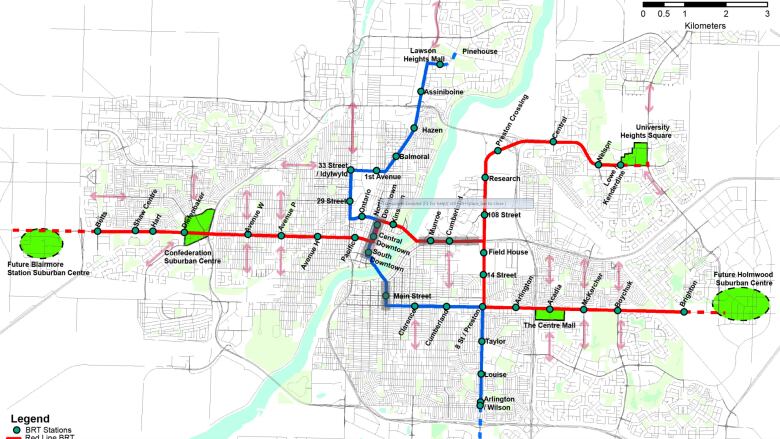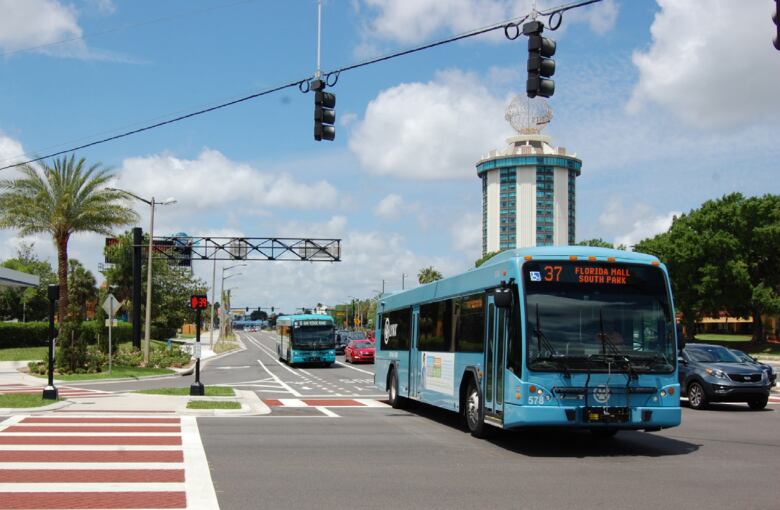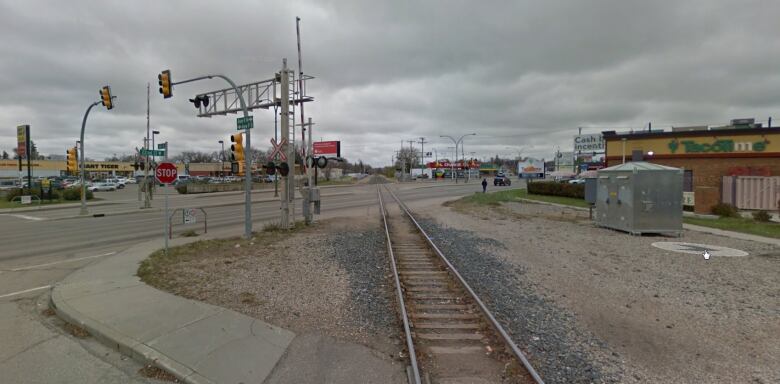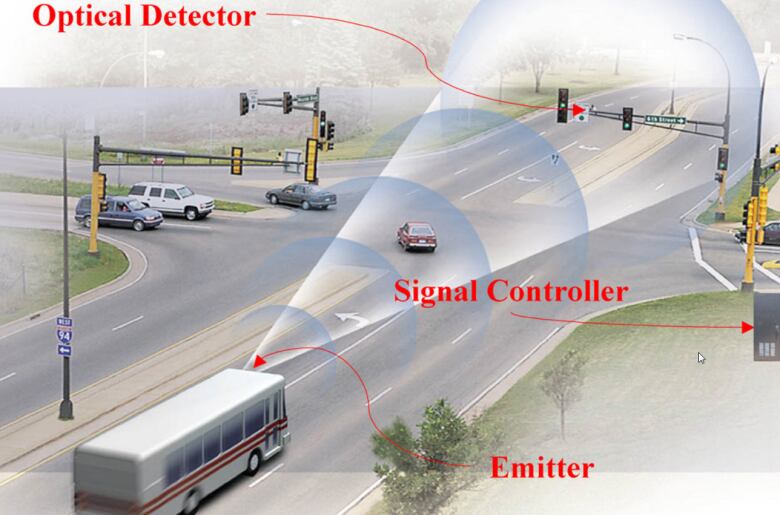Bus-only lanes on downtown 3rd Ave, Broadway part of $120M bus-rapid-transit plan
Estimated price tag is 'plus or minus 25%', says city

The first detailed plan for Saskatoon's newly-priced bus-rapid-transit system calls for buses with lanes all to themselves in three areas of the city, including one downtown street.
The city on Wednesday released contractor HDR Corporation's first draft concept plan for the system, which the city supports. It's now estimated to cost around $120million, "plus or minus 25 per cent," according to a city report.
- Saskatoon looks for councillors' OK on another bus rapid transit planning contract
-
Saskatoon city councillors OK $3M contract for bus rapid transit design
While most of the line would involve shared lanes, the plan calls for "short sections" ofdedicated bus lanes on unspecified parts of Third Avenue in the downtown core, College Drive and Broadway Avenue.

"Further details are to be determined," said Lesley Anderson, the city's director of planning and development, via email.
"I think they're going to have to do something like that on some of our key streets in order for this to work," said Coun.Randy Donauer, the chair of the city's transportation committee.
No dedicated lanes are proposed on Eighth Street, a busy commercial corridor with three lanes going in both directions.
"It would make sense to me," said Donauer.
"I wonder if they just think there's enough traffic flow on Eighth Street because of the three lanes that they can make it work, or if they think there's too much traffic flow and if we take a dedicated lane away, it's going to hurt the rest of the traffic too much."
Staff from the city were not available for an interview Thursday.
22nd Street rail chokepoint
But the omission of dedicated lanes on Eighth Street is not what worries Donauer about the proposal, which he supports overall.
It's the lack of clarity on whether the city has the support of CP, the owner of the rail line that crosses 22nd Street a main route of the proposed BRT system to remove that chokepoint.

"Bus-rapid-transit can very quickly just turn into bus-transit without the rapid if the train comes across on 22nd Street," said Donauer.
He said the city has advised him a report covering that topic will come to city councillors "in the next few months."
"I will need to know what the content of that report is before I see how viable the BRT system is going to be," said Donauer, citing the high estimated price tag.
"I need to know it's going to work, to be honest with you, if we're going to spend that kind of cash."
CBC News has reached out to CPfor comment.
Summer 2019 construction start eyed
In its broad contours, the concept plan released Wednesday is the same as the one touted in recent years by the city, though all station stops (each of which would be large enough to shelter 12 to 20 people) are now identified by name.

The new map also includes several "suburban centres", future areas of high-density housing in "transit-oriented areas in both redeveloped and greenfield sites," said Anderson.
Another key feature of the system would be what HDR Corporation calls "transit signal priority measures," which would use "the existing traffic signal infrastructure, bus arrival detection and software logic to determine theoptimum way to limit bus delay at traffic signals."
Maybe it'll make more sense if you look at the diagram:

HDR says the city's current Saskatoon Transit map "lacks directness of travel." Some conventional bus routes would remain in place, however.
The city is hoping to finalize the BRT system's design, and start construction, by the summer of 2019, with construction taking three years.
Federal funding is being sought.
City councillors will get their first crack at the new plan on Monday.
Corrections
- A previous version of this story said the rail line which crosses 22nd Street in Saskatoon was owned by CN, not CP. The line is owned by CP.Nov 03, 2017 6:10 AM CT












_(720p).jpg)


 OFFICIAL HD MUSIC VIDEO.jpg)
.jpg)



























































































